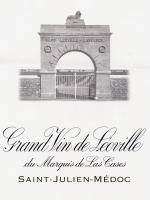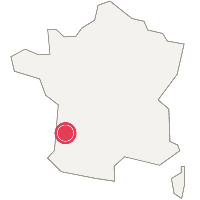You have no items in your shopping cart.
Bordeaux
Château Léoville Las Cases
(13 customer reviews)
The Léoville Las Cases estate comes from one of the oldest lineages of Medoc owners, around the village of Saint-Julien-Beychevelle. Like its cousins Château Léoville Barton and Château Léoville Poyferré, the estate is classified as a Second Growth in the official 1855 classification of Bordeaux wines. Planted with a majority of Cabernet Sauvignon and conducted in sustainable agriculture, the estate produces wines with an international reputation. Find out more
 Recommended by
Recommended byParker Wine Advocate - Bettane et Desseauve avant 2020 - Jancis Robinson
-

Shipped in
secured packaging -

Garantie anti-casse :
Prise en charge totale
The winemaker
Domain History
Originally, one of the oldest and wealthiest families of the Bordeaux nobility owned the estate. Originally, the number of wine-producing properties in the Médoc could be counted on the finger of one hand, Château Margaux and La Tour de Saint-Lambert (now renamed Château Latour) being the best known. In 1638, Master Jean de Moytié, a parliamentarian from Bordeaux, acquired an estate that he named Mont Moytié.
From then on, the castle remained in the family. The first change occurred in 1740 when, following a marriage, Alexandre de Gasq, Lord of Lionville (or Léoville), took over the reins of the estate. The Mont-Moytié estate then became the Léoville estate.
Following the French Revolution, the family was forced to divide and sell a large part of the property. Until 1850, it was progressively divided into three châteaux: Léoville Barton, Léoville Poyferré and Léoville Las Cases. The latter recovers by far the largest part of the original estate: three fifths of the total surface area goes to the new happy owners: the Las Cases family.
The Grail arrived a few years later. In 1855, a classification of the best wines of Bordeaux was expressly requested by Napoleon III on the occasion of the Universal Exhibition the same year. The three Léoville estates were classified as Second Growths (none of the Saint-Julien wines were classified as First Growths, a title reserved for three illustrious châteaux in the Médoc and one in the Graves). Although sometimes criticized today, this historical distinction has reinforced the prestige of the estate in France and abroad.
From the vine to the cellar
Year after year, the property has evolved well. Today and since 1900, the estate belongs to the Delon family, who also own three other estates in the Bordeaux region, including Château Nénin in Pomerol. In total, the château has 97 hectares of vines, planted exclusively with red grapes. As in most estates on the Left Bank of Bordeaux, the grape variety is Cabernet Sauvignon (66%), but also Merlot (24%), Cabernet Franc (9%) and a tiny bit of Petit Verdot (1%). Contrary to some AOC Saint-Julien estates, the estate has chosen not to produce white wine. It is easily distinguished in the landscape because of the Clos enclosing its vines, which have been managed for several decades in integrated agriculture. If the vines are clearly separated from the rest of the vineyard, the winery reminds us of the roots of the estate. The château shares the building with its illustrious cousin, Léoville-Poyferré.
The château's wines
Each year, it is approximately 400,000 bottles which leave the cellars of the Castle. This one produces exclusively two wines: the Grand Vin de Léoville cuvée, and a second wine: Le Petit Lion du Marquis de Las Cases (formerly Clos du Marquis). The first one is essentially made of Cabernet Sauvignon, a noble grape variety with a very high ageing potential, and presents a tannic structure as well as an incomparable fruitiness. While the second one is mainly made of Merlot, it is more supple and fruity, and should be drunk younger. The Saint-Julien wines are perfect with a baked lamb from Pauillac, accompanied by sunny vegetables (eggplant, tomatoes). Slight notes of coffee and chocolate are discretely detectable during tasting, so a dessert playing on these same aromas will highlight them with delight.
Translated with www.DeepL.com/Translator (free version)

22 wines available
between 50 € and 685.99 €
between 50 € and 685.99 €

487 wine's scans
on Twil application
on Twil application
You might like Voir tous les vins de la région
- -32%
- -32%
- -30%









































 TWIL - Achat de Vin
TWIL - Achat de Vin


